书摘:以建筑学方法设计游戏关卡
作者:Christopher Totten
在过去几年中,我发现游戏行业似乎乐于将建筑学作为辅助我们执行设计的一个潜在领域。作为拥有两个建筑学位的游戏开发者,我当然也看到了这两个领域之间的联系。我在还是一名建筑学本科生时就开始与朋友制作小型电子游戏——使用我在课堂上所用的设计软件来绘制游戏的美术内容。因我一些工作室伙伴的建议,我开始在自己的课堂在项目上运用我所学到的游戏设计知识。我认为建筑学与游戏一样,与其用户之间具有象征性的关系,并且设计精良的游戏关卡与建筑大师Frank Lloyd Wright、Le Corbusier、I.M. Pei等人的作品也有异曲同工之妙。我在这两个领域的研究集中体现在一篇关于游戏与建筑学交集的毕业论文中。毕业之后我成了一名游戏开发者,并继续研究建筑理论对关卡设计的运用。这项工作令我撰写出了多篇论文,展开了多次大会演讲,并且现在还出版了一本书。
《An Architectural Approach to Level Design》这本书由CRC Press于6月12日出版,整合了建筑学和关卡设计领域的空间设计理论。本书通过建筑学情境和历史探索了关卡设计原则,为学者和游戏开发专业人士提供了有用的信息。
本文摘录了这本书的一些片段,呈现了可运用于实际关卡设计的基本建筑学元素和一些我自己的游戏玩法和设计日志的插图。这些章节便于读者进一步探索视觉传达的方法,创造玩家的情感反应,鼓励社交互动以及其他对游戏世界来说的重要之事。
看待关卡设计的方法——第1章:建筑学与关卡设计简史
为了全面理解关卡设计中的空间设计原则,我们有必要分析一下现实世界的建筑和电子游戏的惯例。Hal Box,FAIA,Emeritus教授及前德克萨斯州大学建筑学院院长曾主张基于研究和分析来看待建筑学这种教育形式。在这种情况下,“看待”不仅仅用于描述视觉的使用,还可用于处理令建筑与众不同的空间、形式、情境化以及历史元素。
对于关卡设计师来说,这种“看待”可能改变我们对之前游戏关卡的认识——有好也有坏。这样做可能会破坏一些游戏玩家的普遍习惯。例如,在玩游戏过程中“玩家不会向上看”。作为设计师,游戏空间的垂直性可能成为确立一个壮观场景,或者向玩家传递方面的一个重要元素。同理,作为玩家,我们会很本能地直接奔向下一个行动场景而不是暂停下来探索游戏环境。设计师应该以微妙的方法引导游戏环境节奏——在玩家路径中布置叙事元素或者用奖励来刺激探索行为。
Box在自己所著的《像建筑师那样思考》一书中提出了探索和理解一橦建筑的十种方法:
1.了解建筑落成的原因,它的作用,以及它现在的情况。
2.在你四处走动时向上看——注意视觉元素,形式层次,以及建材。
3.通过大小、形状以及它同光线、声音和其他空间的交互来感受其建筑空间。
4.用你的眼睛理解建筑结构的能力,以及该结构如何托起建筑。
5.确定建材在压缩或张驰上的表现,或者它们是重量型还是轻量型的。
6.确定建筑是以何种材料如何构造起来的。
7.检查该建筑在历史上的先例。
8.分析建筑元素的构图、比例以及节奏。
9.观察建筑与其背景是否和谐。
10.分析该建筑为何有别于其他建筑。
显然,这些问题并不全都适用于游戏关卡。虽然关卡的场景艺术可以表示压缩或张驰的结构,游戏艺术本身却并非如此。同理,许多游戏关卡并非由游戏引擎中的刚体对象所决定,因此不会因为引擎的物理系统而崩溃。但是,许多此类观察法在其当前形式下似乎也可运用于游戏关卡,或者可以稍微调整使之符合我们的用途。在这种情况下,我们可以说关卡设计师能够用以下方法来改变自己的观察方法:
1.确定空间所发生的玩法。游戏机制支持什么情况?
2.在四处走动时向上看——注意视觉元素,尤其是与周围环境形成对比或者脱颖而出的美术元素。还要注意向下看——这个空间是否颠倒地运用垂直感从而令你产生危机感?
3.通过大小、形状以及它与光线、声音和其他空间的交互情况来感受游戏空间。体会一下该空间的照明或声音条件让你产生什么感觉?
4.分析关卡的节奏。关卡是否会快速地在你面前自动呈现,还是让你进行探索?它们是必须关卡还是会为探索行为提供额外奖励?
5.这个关卡是否反映了一种玩法风格,还是支持多种玩法?(游戏邦注:例如,死亡模式的地图是否为狙击手、进攻型玩家,防御型等玩家预留了位置?游戏关卡适用于野蛮人,但却不适用于魔法师?)
6.空间如何表达游戏中的故事?其背景或者探索关卡能否让你了解游戏世界?叙事事件是围绕玩家而编写,还是说只有过场动画?
7.检查之前是否存在类似的玩法先例?这些游戏采用了哪种空间体验?
8.分析场景艺术元素的结构、比例和节奏。
9.关卡几何结构与角色的行动能力相比起来情况如何?这一切均在角色可操纵的范围内,还是说关卡空间会对其形成挑战?是否存在超出角色能力范围的东西?如果是,游戏是否提供了能够扩展这些能力的方法?
10.哪些场景艺术元素是重复的?它们是否具有交互性?如果是,它们是否会响应特定的玩法机制?
用这些方式来看待关卡设计,以及本章节中其余部分内容中的建筑和游戏空间先例,这将有助于引导我们探索关卡设计中的空间设计原则。
关卡设计工作流——章节2:关卡设计的工具和技巧
美国建筑师Louis Sullivan常被誉为摩天大厦的创造者,他曾说过“形式要遵从功能”。Sullivan以这个格言确立了一个建筑学现代派的主导原则。现代派是二十世纪早期强调创造形式源自功能的建筑这一主张所定义的建筑学运动。在现代建筑中,装饰物通常是建筑本身或者具有某项用途的产品,而不只是纯粹为了美学效果而存在。与Sullivan相同,Le Corbusier也曾说过,“房子是居住的机器。”他的许多建筑设计与Frank Lloyd Wright、Walter Gropius、Louis Sullivan等人的作品一样,关注的是有目的地为居住者创造一种体验。
关卡设计也同此理。在关卡设计中,开发者心中通常会有一个特定的体验目标。在2008年的一次采访中,Valve关卡设计师Dario Casali指出创造关卡设计理念时“体验是关键”。在本章节早期部分,我们讨论了与用户如何使用游戏空间,以及设计师如何通过空间向用户传达信息有关的关卡设计目标。这些体验式目标能够决定我们关卡设计师如何构造空间:形式遵从功能。
在这个部分,我们将讨论一些包含相同工具的工作流程,我们的切入点就是如何将“形式遵从功能”嵌入游戏设计。
形式遵从核心机制
游戏设计可以通过核心机制这个理念来表现形式遵从功能。核心机制通常被定义为玩家在整个游戏过程中所执行的基本操作。游戏设计师Aki Jarvinen在自己的博士论文中曾创造了一个以核心机制为中心,即设计师从动词入手的设计方法。如果你将核心机制视为玩家在游戏中的基本动作,就能够理解构造每款游戏独特体验的基本元素了。例如,《超级马里奥》就可以说是关于跳跃的游戏。而《塞尔达传说》的主题就是探索,《Katamari Damacy》就是翻滚,《愤怒的小鸟》就是弹射。从这个核心开始,其他添加的动作定义了最终游戏产品的规则。
在设计关卡时,心中存在一个类似的核心机制是一个必要之举。许多新设计师认为各个关卡都应该遵从游戏的核心机制,但我们也可以确定关卡核心机制从而令每个关卡都呈现独特性。这方面的例子就是Valve的《军团要塞2》国的Badwater Basin关卡(详见下图)。
(这是来自《军团要塞2》的Badwater Basin规划图表。地图上标注了RED和BLU队的基地,以及这两个基地之间的主要循环区域和BLU检查点。)
在这个关卡中,游戏的Builders League United(或称BLU)队必须通过一辆轨道上的矿车向对手Reliable Excavation Demolition(或称RED)队的基地投掷一个炸弹。Payload模式的矿车机制采用了《军团要塞2》基于团队的第一人称射击机制的标准并进行了一些调整。这不但改变了玩法机制,还改变了关卡空间几何条件。
Casali所举的一个例子就是关卡中的隧道。在关卡的第一个原型中,设计师将矿道制作成他们运用于其他基本地图的标准宽度。但是,在测试含矿车机制的关卡时,他们发现隧道必须加宽才能同时容纳玩家和矿车。这看似一个小调整,但却可以避免玩家因被矿车堵塞在隧道中而产生的愤怒情绪(详见下图)。
(调整Badwater Basin中的隧道宽度可以让玩家和矿车更好地通过关卡,并且比较不容易削弱攻击方团队的玩法。)
作为关卡设计师,我们的职责就是设计玩家角色与其他玩法元素如何通过关卡。当关卡空间可舒适地容纳参数时,玩家就能够比较轻松地穿越关卡。我们在之后的章节中还将探索当我们创造出将参数推向极致的空间时,就可以实现玩法的戏剧化发展。这些空间包括需要角色尽己所能跳到最远的鸿沟(例如超级马里奥中的world 8-1)或者恐怖游戏中限制玩家行动的走廊,例如《生化危机》(详见下图)。
(《超级马里奥》中的关卡8-1令马里奥跳跃到极限。该鸿沟有10个街区那么宽,比马里奥所能跳跃的9个街区还要多1个街区,所以有必要采用一个宽1个街区的中间岛。多数穿过这种鸿沟的策略都需要玩家先跳到一个中间岛,然后再快速跳到另一个岛,这样马里奥的着陆惯性就不会导致玩家坠入深渊。
(《生化危机》中许多过道的宽度仅能容纳两名玩家并肩而行。在这种情况下,一个僵尸就足以成为玩家穿过该走道的巨大威胁。这种空间条件还给游戏创造了一种幽闭恐惧症的氛围。)
针对玩法而设计关卡并不仅仅要考虑到尺寸大小的问题。它还意味着针对特定角色的能力(如特殊攻击或行动模式)而设计。如《合金装备》等潜行游戏就提供了一个关于如何根据不同角色行为来构造关卡的出色典例。在这款游戏中,玩家角色Solid Snake拥有一种隐藏在墙壁之后并查看角落的能力。与其他动作游戏相比,这极大改变了90度角落的的含义——它们变成了战略性隐藏地点而不仅仅是关卡空间。为此,组成《合金装备》场景的核武器厂就有许多这样的角落,以便玩家从一个地方潜行到另一个地方,查看角落来寻找自己的下一个避难所。这并非基于尺寸大小或参数的设计,而是基于角色自身机制的布局,其玩法动作创造了角色如何行动或与环境交互的一系列可能。
关卡设计方法论
在本章节早前的内容中,我们讨论了建筑师的方法论,即建筑师用于确定自己想让建筑呈现的形状或方向的基本形式。对于关卡设计师来说,确定关卡的核心机制,方法论是另一个发展关卡空间布局的有用工具。
用方法论执行设计与在纸上或电脑上展开设计极为不同。方法论必须有草图,因此缺乏测量。草图练习能够让设计师在花时间衡量自己的设计版本之前,快速形成想法。关卡设计师方法论的关键在于像绘制空间图表一样勾勒出玩法理念。例如,之前提到的Badwater Basin关卡中的设计方法如果是在两者之间更狭小的区域中来呈现矿车轨道,以及BLU玩家可夺取的更小基地,那么它就会形成两个庞大的混乱场面。
Edmund McMillan在《Indie Game:The Movie》关卡设计讨论中指出,当设计师创造出环境机制时,即与玩法相关的关卡交互环节,它们就必须具有多种可用性。在e4 Software的手机游戏《SWARM》(玩家必须将敌人引进陷陆的平台游戏),程序员/设计师Taro Omiya创造了电子栅栏陷陆的多张草图来形象化它们的不同用途。此外,Omiya等人还在电脑和纸张上制作正式的方法论以便形象化关卡的空间方向(例如下坡、漂浮岛以及平台区域)。
(《SWARM!》设计了电子栅栏陷阱后,他们就绘制了许多玩法草图以形象化它们在不同关卡中的用途)
(《SWARM!》的正式方法论形象化显示了不同空间方向,如山坡、倾斜边缘等)。
Whiteblocking数字原型
当开发者在电脑上开始制作数字形式的原型时,他们会通过一个所谓的Whiteblocking流程来创造一个测试关卡。Whiteblocking就是当关卡设计师用一些简单的几何体创造一个关卡,通常是白色或纹理简单的模块来测试关卡是否能够完成他们所需要的玩法目标。在设计过程早期,当设计师试图确定玩家角色的玩法参数和其他东西时,Whiteblocking就有助于确定玩法衡量的情况。同理,设计师也可以用一种类似方法论的做法绘制关卡空间特点的草图,在向关卡添加特定场景美术元素之前,测试不同玩法体验的特定场景的大小和形状(见下图)。
(《SWARM!》中的Whiteblocking显示了关卡中一个引导玩家杀死敌人的重要环节如何在添加场景美术之前以简单的几何体进行测试)
Wbiteblock关卡空间所用的几何体通常是最简单,能够模拟最终关卡设计所使用的碰撞物。碰撞物是游戏引擎中的一个对象组件,可模拟实体对象之间的交互。例如,与一个关卡几何体相关的盒子碰撞物就会导致物体与其他物体之间的互动,就好像它是一个六面的盒子,无论其实际的场景美术外观如何(见下图)。碰撞物可以是简单的几何形状,或者密切贴近有机形状的东西。
(这个植物有一个盒子碰撞物。虽然其3D模型中有一个有机形状,但游戏中的玩家对象将像对待一个矩形固体一样与之互动)
Valve在其关卡设计过程中广泛使用Whiteblocking方法。他们的关卡编辑器Hammer中的引擎基元构造规则允许开发者通过简单而准确的创建方法快速制作3D关卡原型。Hammer的基元被称为“笔刷”,用于粗略定义关卡空间,之后会进行测试查看是否创造了既定的体验。关卡设计师会看出哪种情况可行或不可行,之后再通过编辑笔刷来调整空间。当设计师发现自己较少编辑主要空间,而是关注更小的细节时,就意味着可以在关卡中添加场景美术内容了。
这是一个迭代性的过程,Whiteblocking会从关卡的方法论式交互形式开始,并将设计师引向更为艺术性和装饰性的设计决策。关卡几何越是确定,标准的场景美术也会随之确定,最科成为关卡建设模块。
建筑空间布置——章节3:基本游戏空间
与之前的章节一样,我们将从建筑学的课程入手。之前我们关注的可用于游戏引擎场景的工具和技巧,这次我们将讨论可运用于游戏的空间布置。
游戏与建筑学的区别就在于现实世界的建筑必须遵从现实规则。例如,现实世界的建筑必须同时具有内部和外部设计——其中一者必然影响另一者。同理,现实世界的建筑学必须考虑到气候、地质、分区管制以及构造现实状况。而游戏领域却没有这些必须处理的情况。这可能意味着像Atelier Ten Architects和GMO Tea-cup Communications Inc.的地球博物馆(一个漂浮在太空的大型椭圆建筑)或者巴西建筑师Oscar Niemeyer生活中的Hidenori Watanave的探索数据雕像——这两者都是存在于虚拟世界《第二人生》中的建筑结构。这会产生基于玩家行动模式、叙事事件或游戏机制等更为自由的空间布局。的确,“内部”和“外部”不过是基于运用于装饰游戏空间的美术元素的描述。
(这是Atelier Ten建筑和GMO Tea Cup Communication Inc的地球博物馆的一张草图。因为该建筑是在虚拟世界中创造,它并不需要任何构架来支撑组成其主体的成百上千个立方体。设计师是用微软Excel表格设计该建筑形式,之后再用一个自动建模程序生成其几何图形)
(关卡规划的方法论图表草图。游戏关卡可以呈现不寻常的特点,因为它们并不需要像现实建筑那样遵从内部与外部对应的设计)
了解这些区别之后,游戏的空间设计师就可以在游戏设计的自由环境下利用建筑学知识进行设计。有些知识甚至与关卡如何在许多现代游戏引擎中构建具有概念上的联系。
Figure-ground
我们将探索的第一种建筑空间布置就是Figure-ground,它是源自某个构造的积极和消极空间的美学理念,积极空间描述的是被某个对象所占领的区域,而消极空间描述的则是介于对象之间或处于对象之外的空间(见下图)。
(这个插图就是所谓的Rubin花瓶,它呈现了积极和消极空间的概念以及两者之间的互换。根据观看者对黑白图像的理解,这可以视为一个花瓶的形状,或者两张相互对视的脸。)
建筑学中的Figure-ground理论来自积极空间人物的布置。在规划图中查看时,设计师可以看到建筑的布置开始从地面塑造出空间。的确,Figure-ground图像中的这些空间构造与figure本身的布局一样重要。据建筑设计师Matthew Frederick所述,由已安排好的figure所塑造的空间本身就是一种积极空间,因为它们现在也像figure一样具有形式。从城市设计角度来看,这种有框架的空间通常是广场,院子、公园、节点以及其他人们可以“入驻”的会面区域,而其余消极空间则是让人们穿梭的区域。
(在筹划figure-ground图像的空间时,很有必要观察积极空间中的建筑如何从消极空间地面创造出空间。这些空间拥有自己的形式,可以视为积极空间。)
Frederick还指出,在利用Figure-ground理论时,figure元素和空间都可以通过区分结构元素的空间,或者创造与附近figure相似的形式的消极空间进行暗示。这与理论神经系统科学家Gerd Sommerhoff引述建筑师Grant Hildebrand所谈的观念相呼应:
“大脑会根据之前经历的事件所形成的画面来预测未来的事件画面。当无法重现之前的经历时,大脑就会准备重新体验这种设定。如果已经确立了预期,该模式就会用一种合成的愉悦感得到强化。”
这样,我们就可以看出figure-ground为何会成为关卡设计师在许多游戏引擎中创造增加性或减少性空间的方法。许多引擎允许设计师在消极的2D或3D空间中创造具有增加性的图像元素。游戏空间通常是使用积极元素,基于通过消极空间的移动机制而形成。在其他机制中,在固定形式中塑造空间可以创造出房间、走廊以及玩家可以奔跑、隐藏、追逐的其他空间。除此之外,设计师还可以通过暗示性的边缘或强调性的空间来向玩家传递信息。
(这个插图显示了figure-ground布局可用于暗示空间或元素)
(这些插图表明figure-ground关系可运用于多种游戏空间,暗示性的空间关系可能够成为向玩家传达空间信息的一个有效方法)
Form-Void
Form-Void在许多方面是figure-ground的3维进化版本。它是figure-ground在游戏中的自然运用,可以从一个非上下视角的方向查看游戏空间。在form-void理论中,从固定形式创造出来的空间拥有自己的形式。
(这是一些形式之间存在form-void关系的例子)
正如figure-ground是用大量元素组成空间的空间布局一样,form-void是通过添加堆块或减除空间来进行的空间布局。这与我们在第二章:关卡设计的工具与技巧所描述的许多游戏引擎的操作方法一样。与之相似,3D美术程序也允许形式之间通过精心建模或Voolean操作实现交互,可用数学方程式以增加或减少的方式来结合3D模型。 Peter Zumthor的Therme Vals或Mario Botta的Casa Bianchi(两者均位于瑞士)等建筑就能够说明form-void关系可运用于塑造露台、门廊、窗户、卧室和其他用途的空间。在游戏中,这种增减方法可用于创造隐藏性的空地、秘密走廊、伏击点甚至是关卡目标。
(来自Peter Zumthor和Mario Botta的草图表明形式和虚无可以用于确定空间。)
Arrivals
关卡设计是一种对比艺术。它还是光线、路径以及关于你何去何从的歧义性的艺术。所有的这些元素构成了“arrival”(到达)体验,即你首次进入某个空间的感觉。
我们主要通过到达某空间来向玩家传递信息。这也正是空间促使玩家走向下一个目的地或为玩家提供其路径选择的方式。你进入一个空间的体验来自之前空间所提供的空间条件:如果你进入一个大型空间,那么引你进入其中的之前空间应该是狭窄的,这样才能让新空间显得更大;同理,明亮的空间之前对应的应该是阴暗的空间。建筑师Donlyn Lindon和Charles W. Moore在其著作《Chambers For A Memory Palace》中称John Portman & Associates的Hyatt Regency Atlanta酒店就是这种典型。它又被评论者称为“Jesus Chris Spot”,该酒店落成后商人们从较低的天花板空间进入22层的中庭并向上看时,嘴里都在喃喃着“天哪!”类似的空间体验还可见于基于探索的游戏,例如《塞尔达传说》或《合金装备》系列中进入重要敌人遭遇战,道具获取或故事事件的时候(见下图)。
(许多游戏使用对比鲜明的空间条件来突出进入boss房间或目标等重要玩法空间的路径。这是来自《塞尔达:时之笛》中的Temple of Time图表,玩家在此会收到重要的宝剑,这显示了对比鲜明的空间,其拜占庭式的大厅布局则强调了宝剑房间的重要性。)
玩家如何到达空间的另一个重要元素就是他们始于到达点的视角。我们在之后的章节中可以看到,游戏中的摄像角度会对玩家如何理解空间产生重大影响。但是,无论选择什么视角,都有可能产生戏剧化的启示和到达感。在经典建筑中,希腊雅典的帕台农神殿就显示了居住者的视角如何被引向戏剧性启示。在希腊卫城拾阶而上的游客会首先从下方看到帕台农神殿,之后进入卫城前门时,他们就会从西北角看到四分之三的帕台农神殿,而不是以直接的2维视角看到神殿。该路径之后会迫使游客迂回帕台农神殿本身的入口之前在建筑四处转转。游客通过这个路径远比直接走向入口更能获得戏剧性的体验。
(进入帕台农神殿的入口示意图。游客并不会从入口通道一边进入,而是从角落进入。之后他们就必须绕着建筑走。因为该建筑所有的台阶都同样复杂,所以游客走向入口时可以从所有角度欣赏建筑。)
Genius Loci
最后一个建筑学空间经验与布局的关系较小,但与设计空间的另一个目标关系更为密切。这个经验就是Spirit of Place。这个术语来自一个罗马信仰,即灵魂会扮演城市精灵的角色,保护城镇或其他有人口居住的地方。这个术语被20世纪末的建筑师所采纳,并用于描述一个地方的标识或情感体验。
在第二章节,我们讨论了关卡任天堂力量方法,即设计师创造一个宏观层面的方法或者其关卡的规划,然后分配玩法的高潮时刻 ,就像为游戏杂志创造地图一样。每个玩法的高潮时刻,可以是敌人遭遇战,行动谜题,或者有帮助的阻塞点,都有它们自己的Genius Loci。这些地方是用于休息还是战斗?玩家在这些游戏空间是否该感到放松、紧张或思考?这些问题的答案取决于你所创造的游戏,但却有助于确定你想为关卡创造的体验类型。
除了每个玩法遭遇战,关卡设计师还可以在其游戏空间中植入Genius Loci,并将其作为一种将玩家从一个点转移到另一个点的工具。Genius Loci可以通过光线、阴影、空间布局以及空间大小的操控来创建。如果你为恐怖游戏创造关卡,你所创建的Genius Loci就应该是通过对场景艺术、光照、音效和其他资产的精不挑细选而创造出来的。同理,仅有一点或没有Genius Loci的游戏空间就可能是一个流通空间,也就是玩家转移到下一个目的地的空间。根据你所创造玩法的情况,流通空间可能是激烈遭遇战之间的一次休息机会,或者玩家进入下一个难忘玩法时刻前创造悬念的工具。(本文为游戏邦/gamerboom.com编译,拒绝任何不保留版权的转载,如需转载请联系:游戏邦)
Excerpts from An Architectural Approach to Level Design
by Christopher Totten
In the past few years, I have noticed a fascination in the game industry with architecture as a field that could be potentially helpful to the way we design. As a game developer with two degrees in architecture I have likewise seen the connections between the two fields. As an undergraduate architecture student I began making small video games with friends – creating art with the design software I used for classes. On the suggestion of some of my studio-mates, I began utilizing what I learned about game design in my class projects. I felt that architecture, like games, had a symbiotic relationship with its users and that well designed game levels had much in common with the work of architects like Frank Lloyd Wright, Le Corbusier, I.M. Pei, and others. Eventually, my work with both fields culminated in a graduate thesis on the intersections between games and architecture. After grad school, I became a game developer and continued my research into the ways architectural theory could be applied to level design. This work has allowed me to write several articles, give a few conference talks, and now publish a book.
Released on June 12th by CRC Press, An Architectural Approach to Level Design integrates architectural and spatial design theory with the field of level design. The book explores the principles of level design through the context and history of architecture, providing information useful to both academics and game development professionals.
Presenting architectural techniques and theories for level designers to use in their own work, practical elements of how designers construct space are addressed along with experiential elements of how and why humans interact with this space. Throughout the text, readers learn skills for spatial layout, evoking emotion through gamespaces, and creating better levels through architectural theory.
This article contains several excerpts from the book showing basic architectural elements that can be applied to practical level design applications along with illustrations from the book taken from my own gameplay and design journals. These sections prepare the reader for further explorations of methods for visual communication, producing emotional responses in players, encouraging social interaction, and other things important to game worlds. I hope you enjoy reading it as much as I have enjoyed researching and writing it. The book can be purchased at http://www.crcpress.com/product/isbn/9781466585416
Ways of Seeing for Level Design – from Chapter 1: A Brief History of Architecture and Level Design
In order to fully understand spatial design principles for level design, it is necessary to analyze precedents from both real world architecture and video games. Hal Box, FAIA, Professor Emeritus and former Dean of the School of Architecture at the University of Texas at Austin argues for an educated form of seeing architecture based on study and analysis. In this case, “seeing” is not used to only describe using the visual senses, but also to process the spatial, formal, contextual, and historical elements that make a building unique.
For level designers, this type of “seeing” can be transformative for how we learn from the levels of previous games – both good and bad. Doing this may involve breaking some habits common to game players. For example, there is a saying that “gamers don’t look up” when playing games. As designers, the verticality of gamespaces can be an important element in establishing the grandiosity of a setting or for communicating direction with players. Likewise, as players, it is common to run directly to the next action scene rather than pause to explore game environments. Designers should look for ways to direct the pacing of a game environment in subtle ways – placing narrative elements in the way of player pathways or incentivizing exploration with rewards.
In his book, Think Like an Architect, Box proposes ten ways for exploring and understanding a building:
1. Learn why a building was built, what it was for, and what it is now.
2. Look up as you walk around – noticing visual elements, layering of forms, and materials.
3. Sense the space by its size, shape, and how it interacts with light, sound, and other spaces.
4. Train your eye to understand the structure of the building and how it holds the building up.
5. Determine how materials are working – in compression or tension – or if they feel heavy or light.
6. Determine how the building was constructed and from what materials.
7. Examine the historical precedents of the building.
8. Analyze the composition, proportions, and rhythms of building elements.
9. Observe the appropriateness of the building to its setting.
10. Analyze what makes the building special from others[i].
Obviously, not all of these apply to game levels. While the environment art of a level can represent structures that are in compression or tension, the game art itself will not be. Likewise, many game levels are held up by the fact that they are not defined as rigidbody objects in the game engine and thus, do not fall according to the engine’s physics system. However, many of these proposed ways of seeing are applicable to game levels in their current form, or may be modified slightly to fit our own purposes. In this way, we may say that level designers can modify their ways of seeing with these methods:
1. Identify what gameplay occurs in the space. What are the game mechanics supported?
2. Look up as you walk around – noticing visual elements, especially art that contrasts the rest of the environment or somehow calls attention to itself. Also look down – is the spaces’s verticality used in reverse to make you feel in danger?
3. Sense the space by its size, shape, and how it interacts with light, sound, and other spaces. How do the lighting or sound conditions make you feel?
4. Analyze the pacing of the level. Does the level usher you through itself quickly or are there opportunities to explore? Are these required or bonuses for extra curiosity?
5. Is there one gameplay style reflected in this level, or are multiple supported? (For example, does a deathmatch map have places for snipers, offensive players, defensive players, etc.? Does a game level play well for barbarians but poorly for mages?)
6. How does the space express the narrative of the game? Is it a backdrop or does exploring the level tell you about the game world in some way? Are narrative events scripted to occur around the player or are there cutscenes?
7. Examine any historical or gameplay precedents? What kinds of spatial experiences were in those games?
8. Analyze the composition, proportions, and rhythms of environment art elements.
9. How does level geometry compare with the movement abilities of your avatar? Is everything well within their capabilities or does the level space challenge these measurements? Is there anything that is outside of these capabilities? If so, does the game offer any way to expand these abilities?
10. What environment art elements are repeated? Are they interactive? If so, do they correspond to a specific gameplay mechanic?
These ways of seeing for level design, as well as the architectural and gamespace precedents found in the rest of this chapter, will guide our explorations of spatial design principles for level design.
Level Design Workflows – from Chapter 2: Tools and Techniques for Level Design
The American architect Louis Sullivan, often credited as the creator of the skyscraper, once famously said, “Form ever follows function.” This was shortened to the famous design idiom, “Form follows function.” With this phrase, Sullivan stated one of the driving principles of architectural modernism. Modernism was an architectural movement of the early twentieth century defined by an emphasis on creating buildings whose form was derived from their purpose. In modernist architecture, ornament was generally a product of the building itself or applied for a purpose, rather than simply for the sake of aesthetics. Similarly to Sullivan, Le Corbusier stated, “The house is a machine for living in.” Much of his architecture, as with the architecture of Frank Lloyd Wright, Walter Gropius, Louis Sullivan, and others was focused on purposefully creating an experience for the occupants.
As we have seen, the same can be said of level design. In level design, developers often design with a specific experiential goal in mind. In a 2008 interview, Valve level designer Dario Casali argued that “experience is key” when creating level design ideas[ii]. Earlier in this chapter, we discussed some goals of level design that related to how users use gamespace and how we as designers communicate to the user through the space. These experiential goals should dictate how we as level designers construct space: form follows function.
In this section, we will discuss some workflow processes that involve these same tools, beginning with how “form follows function” fits into game design.
Form Follows Core Mechanics
The tenants of form follows function thrive in game design through a concept known as the core mechanic. A core mechanic is often defined as the basic action that a player makes throughout the course of a game. In his doctoral dissertation, game designer Aki Jarvinen similarly created a core mechanic-centered design method where designers began from verbs[iii]. If one looks at core mechanics as the basic verb of what a player does in a game, they can understand the foundational elements of what builds each game’s unique experience. For example, Super Mario Bros[iv]. can be said to be about jumping, The Legend of Zelda[v] is about exploring, Katamari Damacy[vi] is about rolling, Angry Birds[vii] is about flinging, and so on. Beginning from this core, other actions are added that define the rules of the final game product.
When designing levels, having a similar core mechanic idea in mind is necessary. While many new designers assume that individual levels should simply follow the core mechanic of the game, it is possible to define level core mechanics to make each unique. An example is the Badwater Basin level (figure 2.43) of Valve’s Team Fortress 2 (TF2)[viii].
Figure 2.43 A plan diagram of Badwater Basin from Team Fortress 2. RED and BLU team bases are marked on the map, as are major circulation areas and BLU checkpoints between the two bases.
In this level, the game’s Builders League United (or BLU) team must push a bomb into their opponent’s, the Reliable Excavation Demolition (or RED) team’s, base via a mine cart on a track. The mine cart mechanic of Payload mode, which Badwater Basin is a map for, takes TF2’s standard team-based first person shooter mechanics and adds a twist. Not only does this change the mechanics of gameplay, but also the conditions of the levels spatial geometry.
One example cited by Casali, who helped design the level, was the level’s tunnel. In the first prototypes of the level, designers made the mine tunnels a standard width that they had used for other basic maps. However, upon playtesting the level with the mine cart-pushing mechanic in place, they realized that tunnels had to be widened to accommodate both players and cart. This seems like a small change, but it prevented a lot of aggrivation from players that had been getting blocked out of tunnels by the cart (figure 2.44.)
Figure 4.44 Modifying the width of the tunnel in Badwater Basin allowed for better circulation of both the player and mine cart through the level and made gameplay less aggravating for the offensive team.
As level designers, it is our job to design to the realities of how player avatars and other gameplay elements move through levels. Traversing levels is comfortable when level spaces comfortably accommodate metrics. As we will explore in later chapters, gameplay drama can be achieved when we create spaces that push metrics to the limit. Such spaces include gaps that require the farthest possible jump a character can do such as the one found in world 8-1 of Super Mario Bros. (figure 2.45) or tight corridors that restrict movement in horror games, such as Resident Evil[ix] (figure 2.46.)
Figure 2.45 This section of Super Mario Bros.’s level 8-1 pushes Mario’s jumping metrics to their limit. The gap is 10 blocks wide, 1 block longer than Mario’s running jump distance of 9 blocks, so using the 1-block-wide middle island is necessary. Most strategies for crossing this gap call for a running jump to the middle island, and then another quick one off the 1-block-wide island so Mario’s landing inertia doesn’t launch the player into the pit.
Figure 2.46: Many hallways in Resident Evil are barely wide enough for two characters standing shoulder to shoulder. In this way, a single zombie in these hallways can become a significant threat for players trying to get past. This spatial condition also gives the game a claustrophobic atmosphere.
Designing to gameplay does not solely have to involve measurements either. It can also mean designing to specific character abilities such as special attacks or movement modes. Stealth games, like Metal Gear Solid[x] provide a great example of how to construct levels based on different types of character movement. In Metal Gear Solid, the player character, Solid Snake, has the ability to hide behind walls and look around corners. This vastly changes the meaning of ninety-degree corners when compared with other action games – they are strategic hiding places rather than just level geometry. As such, the nuclear weapons facility that makes up Metal Gear Solid’s environments has lots of these corners so players can sneak from place to place, looking around corners to find their next refuge. While not measurement or metric based, these kinds of layouts are based on the character’s own mechanics, the gameplay actions that form the range of possibilities for how a character may act or interact with their environment.
Level Design Parti
Earlier in the chapter, we discussed the architect’s parti, basic formal explorations that architects utilize to determine what shape or orientation they want their building to take. For level designers coming off of determining the core mechanics of their level, a parti is another valuable tool for developing the spatial layout of your level.
Designing with parti is quite different than designing on graph paper or computer. Partis are meant to be sketches, and therefore will lack measurement. Sketching exercises allow designers to form ideas quickly before spending the time to plan measured versions of their designs. The key to a level designer’s parti is to sketch gameplay ideas as spatial diagrams. For example, a level design parti of the previously mentioned Badwater Basin level would be two large masses (representing the team’s base areas) with thinner zones of circulation in between the two to represent the mine cart track, and some smaller bases for BLU players to capture, similar to the diagram shown in 2.43.
In his discussions of level design from Indie Game: The Movie, Edmund McMillan argues that once a designer has created environmental mechanics, that is, interactive parts of a level that factor into gameplay, they should be usable in many different ways in order to be valuable. For the e4 Software’s mobile game, SWARM![xi], a ball-roller/platformer game where players had to lure enemies into traps, programmer/designer Taro Omiya created many sketches of the electric fence traps to visualize the different uses they could have (figure 2.47.) Likewise, Omiya and others working on the game made formal Partis on the computer and on paper to visualize spatial orientations of levels such as downhill slides, floating islands, and platforming areas (figure 2.48.)
Figure 2.47 Once designers for SWARM! created the electric fence traps, they sketched many gameplay partis of them to visualize how they could be utilized through different levels.
Figure 2.48 Formal partis for SWARM! show the visualization of different spatial orientations such as hills, tilted ledges, and others.
Digital Prototypes with Whiteblocking
When developers have moved from prototyping off the computer to prototyping in digital form, they create test levels through a process known as Whiteblocking. Whiteblocking is when a level designer creates a level out of simple geometry, most often white or simply-textured blocks (thus the name), to test whether levels accomplish the gameplay goals they want. Early on in the design process, when designers are trying to define gameplay metrics of player characters and other things, Whiteblocking can help determine what gameplay measurements should be. Likewise, designers can draft the spatial characteristics of their levels in a parti-like way, testing the sizes and shapes of certain environments for different gameplay experiences, before specific environmental art is added to a level (figure 2.51.)
Figure 2.51 Whiteblocking done for SWARM! shows how an important section of a level meant to teach players how to kill enemies was thoroughly tested in simple geometry before environment art was added.
The geometry used to Whiteblock level spaces is usually the simplest needed to simulate the colliders that will be used in the eventual final level design. Colliders are a component of objects in game engines that simulate the interaction between physical objects. A box collider attached to a piece of level geometry, for example, will cause that object to interact with other objects as though it is the shape of a six-sided box, regardless of the shape of the actual environmental art (figure 2.52.) Colliders can be simple geometric shapes or can be made to tightly fit organic shapes.
Figure 2.52: This plant has a box collider attached to it. Though its 3D model has an organic shape, player objects in a game will interact with it as though it were a rectangular solid.
Valve uses Whiteblocking extensively in its level design process. The construction rules for engine primitives in their level editor, Hammer, allows rapid 3D level prototyping through simple and precise building. Hammer’s primitives, called “brushes”, are used to roughly define level spaces, which are then playtested to see if the intended experience is created. Level designers see what worked properly and what did not, and then change the spaces by editing the brushes. When the designers find themselves editing little of major spaces and instead focusing on smaller details, the level is ready for environment art.
As an iterative process, Whiteblocking begins with almost parti-like interactive forms of levels and moves designers towards more art and ornament-centric design decisions that are not unlike interior design. As level geometries become better defined, standard pieces of environment art can be defined as well, eventually becoming the building blocks of levels.
Architectural Spatial Arrangements – from Chapter 3: Basic Gamespaces
As with the previous chapter, we will begin with lessons from Architecture. Where last time we focused on tools and techniques that were useful in game engine environments, this time we will discuss spatial arrangements that can be utilized in games.
Games and architecture differ in the fact that real-world Architecture must conform to real-world rules. For example, real-world buildings must both have an interior and exterior – with the shape of one influencing the other. Likewise, real-world architecture must take into consideration weather, geology, zoning regulations, and structural realities. Conversely, these are not things that gamespaces must deal with. To one extreme, this can mean experimental structures such as Atelier Ten Architects and GMO Tea-cup Communications Inc.’s Museum of the Globe[xii], a large elliptical structure formed from cubes floating in space (figure 3.1) or Hidenori Watanave’s explorable database sculpture on the life of Brazilian architect Oscar Niemeyer[xiii] – both former structures within the virtual world Second Life[xiv]. For more day-to-day level design, however, this means gamespaces that are free from interior/exterior requirements. This results in more freeform spatial layouts based on player movement patterns, narrative events, or game mechanics (figure 3.2.) Indeed, “interior” and “exterior” are little more than descriptions based on the art used to decorate the gamespace.
Figure 3.1 A sketch of Atelier Ten architects and GMO Tea Cup Communication, Inc’s Museum of the Globe. Since the building is built within a virtual world, it does not require any structure to hold up the hundreds of cubes making up its main body. The designers designed the buildings form in Microsoft Excel and then generated the geometry in an automatic modeling program.
Figure 3.2 Parti diagram sketches of level plans. Game levels can take on unusual forma characteristics because they do not have to conform to a corresponding interior and exterior as real buildings do.
With these differences in mind, spatial designers for games can take advantage of architectural lessons within the freedom of game design environments. Some of these lessons even have conceptual links to how levels are constructed in many modern game engines.
Figure-Ground
The first architectural spatial arrangement we will explore is that of figure-ground. Figure-ground is derived from artistic notions of the positive and negative space of a composition, where positive space describes the area inhabited by the subject of a piece and negative space describes space outside of or in-between subjects (figure 3.3.)
Figure 3.3 This illustration, known as Rubin’s vase, shows the concept of positive and negative space and how they can be reversed. Based on whether the viewer is interpreting the black or white portions of the image as the negative space, this is either an illustration of two faces looking at one another or of a vase.
Figure-ground theory in architecture comes from the arrangement of positive space figures, often poche’d building masses, within a negative space ground. When viewed in plan, the designer can see how the placement of building figures begins to form spaces out of the ground. Indeed, the formation of such spaces in figure-ground drawings is as important as the placement of the figures themselves (figure 3.4.) According to architectural designer Matthew Frederick, spaces formed by arranged figures become positive space in their own right, since they now have a form just as the figures do[xv]. From an urban design standpoint, these framed spaces are often squares, courtyards, parks, nodes, and other meeting areas where people can “dwell”, while remaining negative spaces are for people to move through[xvi].
Figure 3.4 When mapping out spaces with figure-ground drawing, it is important to observe how the positive space figures create spaces out of the negative space ground. These spaces, having forms of their own, are considered positive space.
Frederick also points out that when utilizing figure-ground, both figural elements and spaces can be implied[xvii], either by demarcating a space with structural elements or by creating negative spaces that resemble the form of nearby figures (figure 3.5.) This echoes theoretical neuroscientist Gerd Sommerhoff who, as quoted by architect Grant Hildebrand, said,
The brain expects future event-and-image sets to be event-and-image sets previously experienced. When repetition of previous experience seems likely, the brain readies itself to reexperience the set. If expectances are confirmed, the model is reinforced, with a resultant sensation of pleasure.[xviii]
In this way, we can see how figure-ground becomes a powerful tool for level designers to create additive and subtractive spaces within many game engines. Many engines allow for the creation of additive figure elements to be arranged within negative 2D or 3D space. Gamespaces are often based on mechanics of movement through negative space, using positive elements as ledges or supports for a player’s journey. Under other mechanics, forming spaces in-between solid forms allows for the creations of rooms, corridors, and other spaces that players can run, chase and hide in. Additionally, designers can communicate with players via implied boundaries or highlighted spaces that use figure-ground articulations like those described by Sommerhoff (figure 3.6.)
Figure 3.5 This illustration shows how figure-ground arrangements can be used to imply spaces or elements.
Figure 3.6 These illustrations show ways that figure-ground relationships can be utilized in many gamespaces, implying spatial relationships can be an effective way of relaying spatial messages to players.
Form-Void
Form-Void (also called solid-void) is in many ways a 3-dimensional evolution of figure-ground. Indeed, it is the natural application of figure-ground in games where the gamespace will be viewed from a non-top-down perspective (figure 3.7.) In form-void theory, spaces that are carved out of solid forms are implied to have a form of their own.
Figure 3.7 Some examples of form-void relationships between forms.
Just as figure-ground is spatial arrangement by marking off spaces with massive elements, form-void is spatial arrangement by adding masses or subtracting spaces from them. This further resembles the operation of many of the game engines described in Chapter 2: Tools and Techniques for Level Design, in how these engines allow for the placement of geometric forms or for their carving out of an endless mass. Similarly, 3D art programs allow for intersections between forms to be realized through either careful modeling or Boolean operations, where mathematical equations are used to combine 3D models in additive or subtractive ways. Buildings such as Peter Zumthor’s Therme Vals or Mario Botta’s Casa Bianchi, both in Switzerland, show how form-void relationships can be used to carve out spaces for balconies, doorways, windows, private rooms, and other functions (figure 3.8.) In games, such additions and subtractions can be used for hidden alcoves, secret passages, sniping spots, or even highlighted level goals.
Figure 3.8 Sketches from Therme Vals by Peter Zumthor and Casa Bianchi by Mario Botta show how forms and voids can be used to define space.
Arrivals
Level design is an art of contrasts. It is also an art of sight lines, pathways, dramatic lead-ups, and ambiguity about the nature of where you are going. All of these elements contribute to the experience of an arrival, the way in which you come into a space for the first time.
Much of how we will communicate with the player is through arrivals in space. It is also in how that space ushers the player towards their next destination or provides the means for players to choose their own path. Much of how you experience a space when you arrive in it comes from the spatial conditions of the spaces that preceded it: if you are arriving in a big space, spaces leading up to it should be enclosed so the new space seems even bigger, light spaces should be preceded by dark, etc. In their book, Chambers For A Memory Palace, architects Donlyn Lindon and Charles W. Moore highlight John Portman & Associates’ Hyatt Regency Atlanta Hotel as featuring such arrival in its atrium space. Dubbed the “Jesus Chris Spot” by critics, it was not uncommon soon after the hotel was built for businessmen to arrive in the twenty-two-story atrium from the much lower-ceilinged spaces preceding it and mutter “Jee-sus Christ!” as they looked upward[xix] Similar spatial experiences are common in exploration-based games such as those in the Legend of Zelda or Metroid series for leading up to important enemy encounters, item acquisitions, or story events (figure 3.9.)
Figure 3.9 Many games use contrasting spatial conditions to highlight the approaches to gameplay-important spaces such as boss rooms or goals. This diagram of the Temple of Time from The Legend of Zelda: Ocarina of Time, where the player receives a narrative-important sword, shows how contrasted spaces and a Byzantine-esque basilica plan emphasize the importance of the sword chamber.
Another important element of how players arrive at spaces is their point of view from the arrival point. As we will see later in the chapter, camera angles in games have a great deal of influence with how a player understands space. However, dramatic reveals and arrivals are possible regardless of the chosen point-of-view. In classical architecture, the procession-like approach to the Parthenon in Athens, Greece shows how an occupant’s point of view is steered towards dramatic reveals. Visitors climbing up the steps of the Acropolis would first see the Parthenon from below. Then, passing through the Propylaea, the portico-like entrance building of the Acropolis, they would be greeted by a three-quarters view of the Parthenon from its Northwestern corner rather than a more 2-dimensional view from straight on. The path then forced visitors to walk around the building before they would wind back to the entrance of the Parthenon itself. From this forced path, visitors got a more theatric approach to the Parthenon than if they had walked straight up to its entrance (figure 3.10.)
Figure 3.10 Diagram of the entry procession to the Parthenon. Visitors did not approach from the entryway side, but from a corner. They then had to walk around the building. Since all elevations of the building were equally intricate, it could be enjoyed from all sides as visitors walked around to the entrance.
Genius Loci
A last architectural spatial lesson is less of an arrangement and more of another goal for designing your own spaces. This lesson is known as Genius Loci, also known as Spirit of Place. This term comes from a Roman belief that spirits would protect towns or other populated areas, acting as the town’s Genius. This term was adopted by late 20th century architects to describe the identifying qualities or emotional experience of a place. Some call designing to the concept of Genius Loci placemaking, that is, creating memorable or unique experiences in a designed space.
In Chapter 2, we discussed the Nintendo Power Method of level design, where the designer creates a macro-scaled parti or plan of their level, then distributes highlighted moments of gameplay as though developing a map for a game magazine. Each of these highlighted moments of gameplay; be they enemy encounters, movement puzzles, or helpful stopping points; have potential for their own Genius Loci. Are these places for rest or for battle? Should the player feel relaxed, tense, or meditative in these gamespaces? The answers to these questions depend highly on the game you are building, but can help you determine the kind of feel you want for your levels.
Beyond individual gameplay encounters, level designers can implant Genius Loci within the entirety of their gamespaces and use it as a tool for moving players from one point to another. Genius Loci can be built through manipulations in lighting, shadows, spatial organization, and the size of spaces – which will all be discussed in detail later in the book. If you are building a level for a horror game, for example, the Genius Loci you build should be one of dread, created through careful selection of environmental art, lighting, sound effects, and other assets. Likewise, spaces in a game with little or no Genius Loci can be circulation spaces, that is, spaces for the player to move through to get to their next destination. Depending on the gameplay you are creating, circulation spaces may be a chance to rest between intensive encounters or tools for building suspense before a player gets to the next memorable gameplay moment.(source:gamasutra)
上一篇:关于叙述设计方法的4大层面


























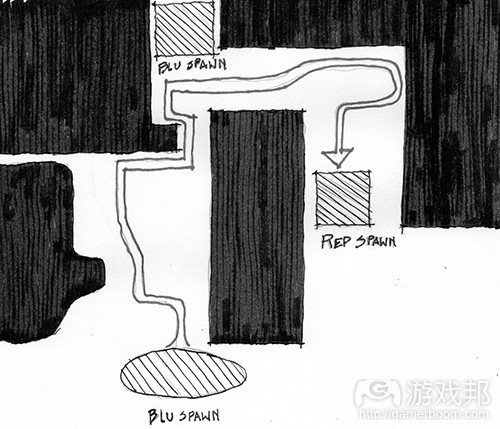
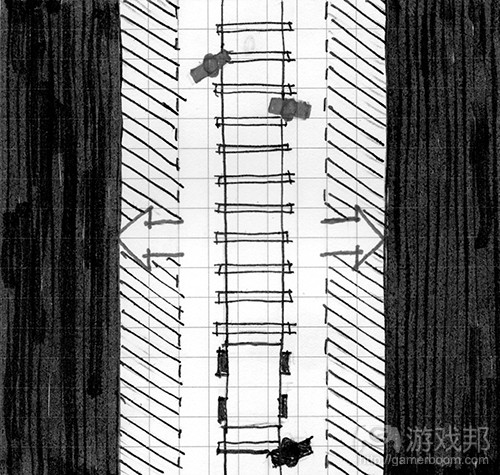
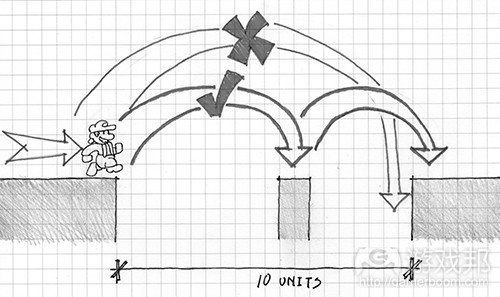
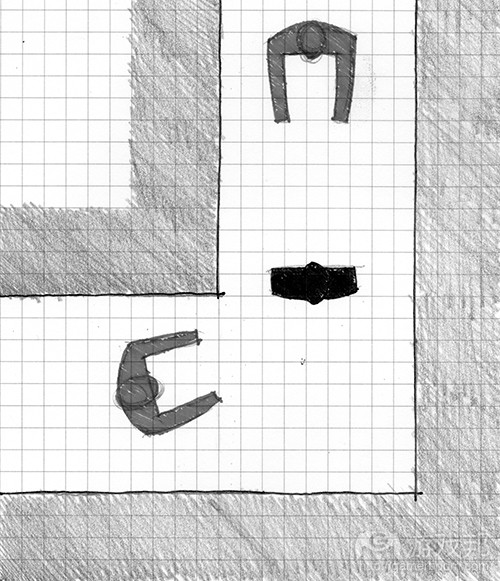
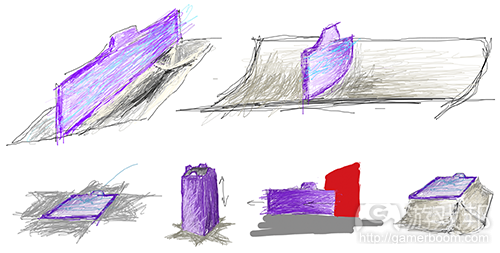


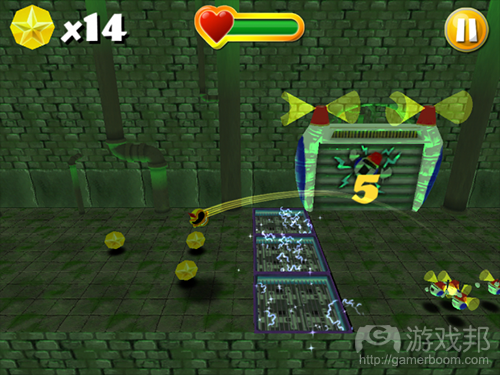
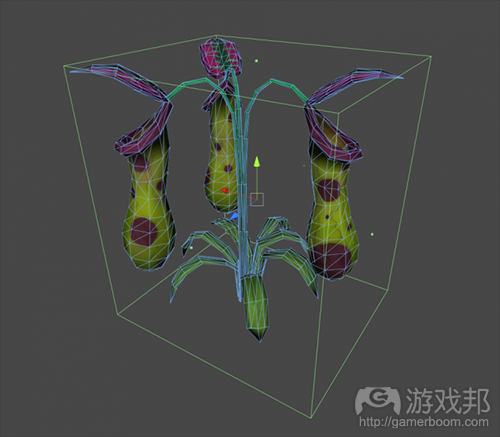

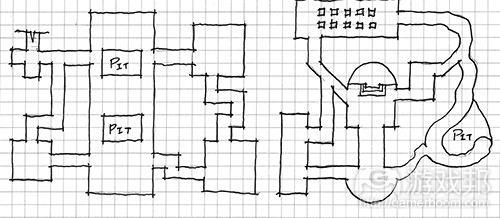

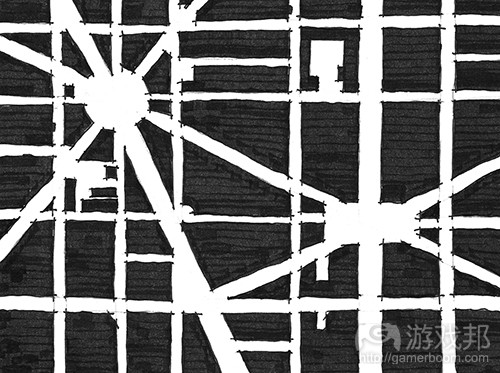
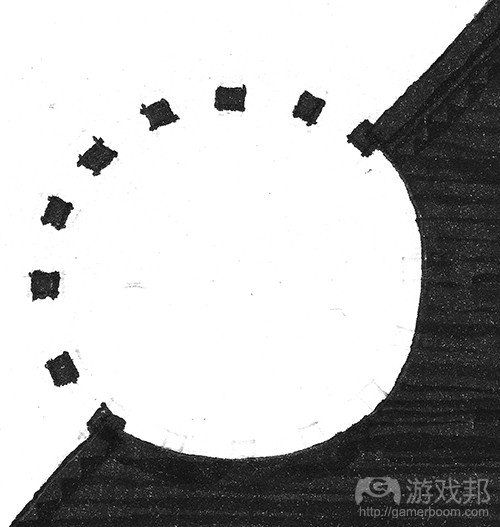
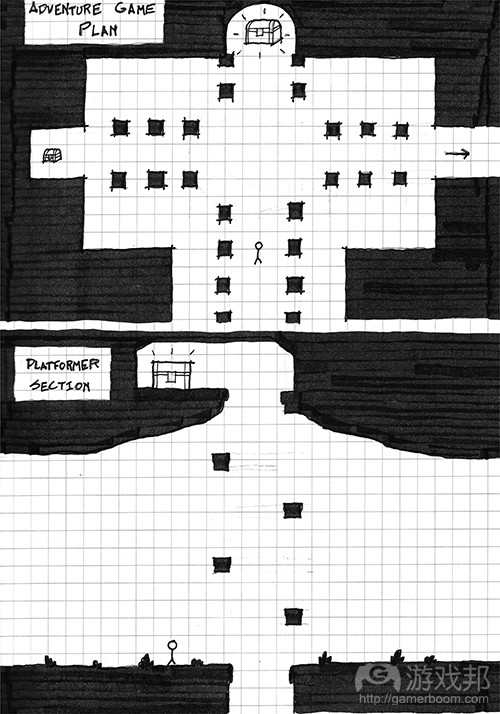
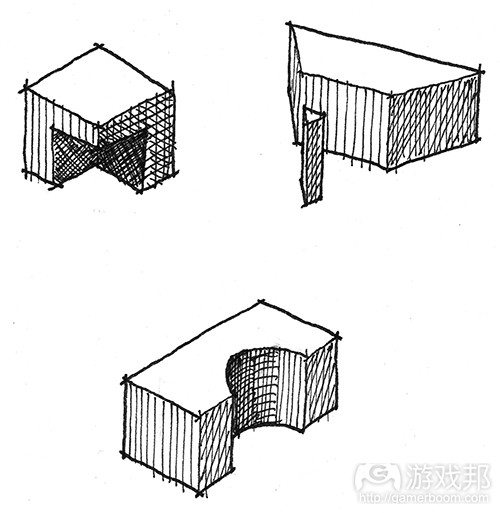
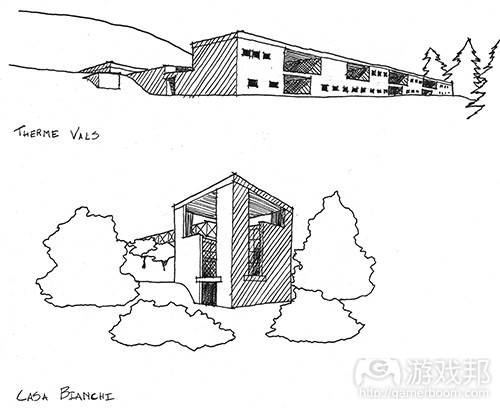
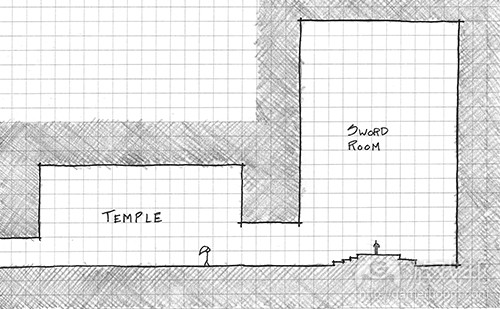
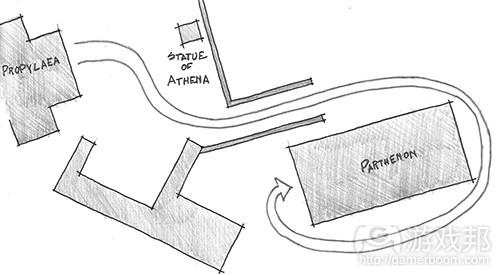














 闽公网安备35020302001549号
闽公网安备35020302001549号